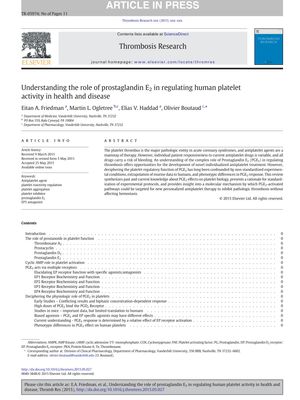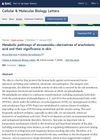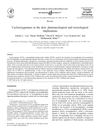Understanding the Role of Prostaglandin E2 in Regulating Human Platelet Activity in Health and Disease
May 2015
in “
Thrombosis Research
”

TLDR Prostaglandin E2 affects human platelet activity in complex ways that could lead to personalized heart disease treatments.
The document reviews the role of Prostaglandin E2 (PGE2) in human platelet activity, focusing on its potential as a target for antiplatelet therapies. PGE2 acts through receptor subtypes EP2, EP3, and EP4, which have distinct signaling pathways and effects on platelet aggregation. The review highlights the biphasic effect of PGE2 on platelet aggregation, which can inhibit or potentiate aggregation depending on the concentration and receptor subtype involved. It was found that in a study of 104 healthy volunteers, 45% exhibited an inhibitory response to low doses of PGE2, while 55% showed a potentiating response. This variability suggests the existence of different phenotypes among individuals, which could influence their risk for thrombotic cardiovascular events. The document suggests that personalized antiplatelet treatments could be developed by targeting specific EP receptors, particularly EP3 and EP4, to manage cardiovascular thrombotic events without compromising hemostasis. However, further research is needed to understand the mechanisms behind the different PGE2-induced phenotypes and the role of PGE2 in atherothrombosis. The paper also cautions about the non-platelet effects of systemic administration of EP receptor agents, which could have pro-inflammatory or tumor-promoting effects.



